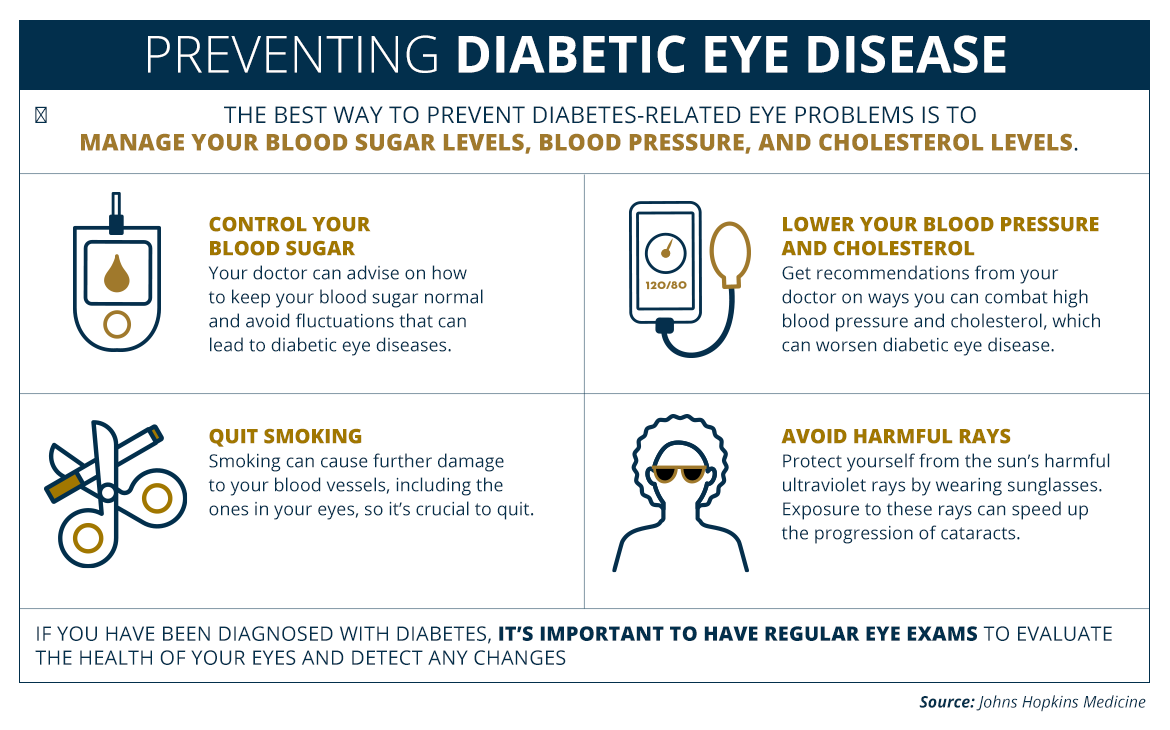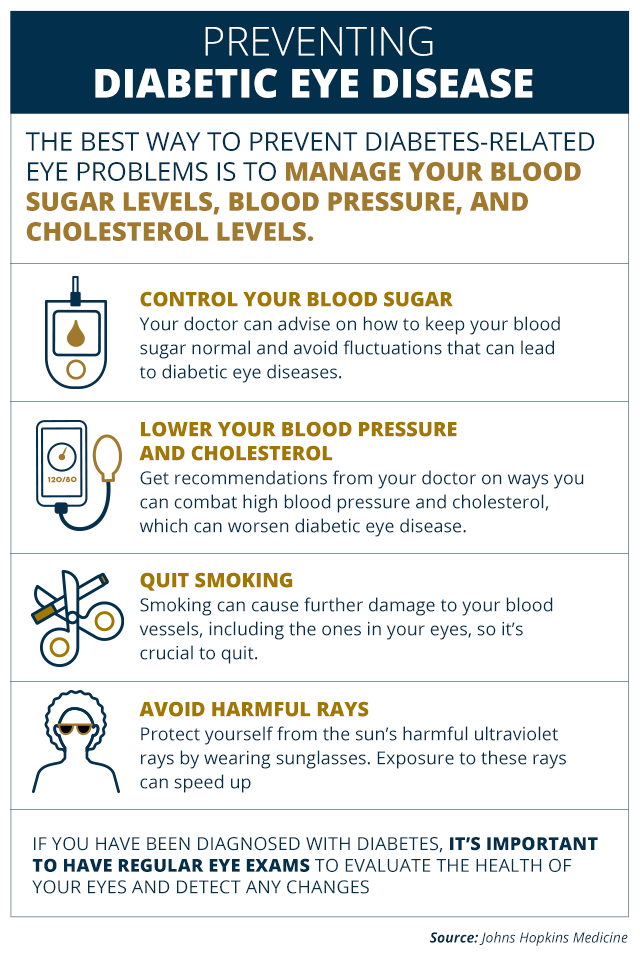10 Dec 2021
The Surprising Link Between Diabetes and Eye Health
Estimated read time: 5 minutes
You may not automatically associate sugar and eyesight except metaphorically, when someone is looking at you sweetly. Yet these two go hand in hand: there is a profound chemical and physical link between sugar and eye health. In fact, certain subtle changes in our vision can signal that something is wrong with the way the body is processing sugar. It’s important to pay attention to these warning signs in order to prevent prediabetes or diabetes from taking hold.
Blurry vision is often attributed to fatigue, headaches, stress, or spending hours and hours in front of a computer screen. While these can be the reason why you’re having difficulty focusing your eyesight or seeing little specks or floaters, blurry vision can mean something else — it could be an early sign that you need to watch your sugar.
What Can Our Eyes Tell Us About Blood Sugar Levels?
Diabetes is a chronic illness that impacts the body’s ability to transform food into energy. Its causes are incredibly complex and can include genetic as well as environmental factors. While each individual’s medical history and the underlying causes of their diabetes may differ, the role of sugar in the body is the same for everyone.
Most of the food we eat is broken down and transformed into sugar (also known as glucose). Sugar is then released into the bloodstream, where it travels to the different organs that need it to perform diverse biological functions essential for life and well-being.
Insulin, a hormone produced by the pancreas that helps turn glucose into energy, is at the center of this process.
There are three types of diabetes: type 1 diabetes, thought to be caused by an autoimmune reaction that prevents the body from producing insulin; type 2 diabetes, in which the body does not use insulin properly and cannot maintain normal blood sugar levels; and gestational diabetes, which develops during pregnancy in women who don’t already have the illness.
There is also something called prediabetes, a serious condition in which blood sugar levels are higher than normal, but not high enough to be considered diabetes. In the United States alone, 88 million adults (more than one in three) have prediabetes; in Latin America, there are 84.1 million adults with the condition.
The timely diagnosis of prediabetes is critical, since having it can increase the risk of developing diabetes. Prediabetic patients can still take action to avoid developing the disease, and even reverse the process of prediabetes. But 80% of people with prediabetes don’t know they have it, in part because they miss important signs like vision changes, and blurry vision in particular.
How do blood sugar levels affect vision? When the body cannot produce insulin or use insulin correctly, glucose starts to accumulate in the bloodstream and damage the blood vessels throughout the body, from the heart to the eyes. The level of damage is, of course, directly proportional to factors such as when the illness was diagnosed and how it is managed.
In other words, blurry vision can appear before or after diabetes diagnosis and treatment. It can also be a consequence of poorly managed diabetes.
Additionally, if the underlying condition remains untreated, blurry vision can be the first step toward developing more serious eye complications.
Over long periods, high levels of sugar in the blood can damage the minute blood vessels in the retina, a layer of tissue in the back of the eye that senses light. The retina is responsible for receiving light and images that enter the eye and transforming them into nerve impulses that are sent to the brain. Damage over time can lead to inflammation in a central part of the retina called the macula, generating a mini “explosion” of the blood vessels that leads to internal bleeding and causes blurry vision.
In medical terms, this is called diabetic eye disease or diabetic retinopathy.
Sugar Levels and Eye Diseases
Diabetic retinopathy is the principal eye condition associated with diabetes. If the underlying cause — high blood sugar levels — is left untreated, it can cause decreased vision or even blindness. These complications are more likely to arise if a person:
- Has had diabetes for a long time or does not know they have it;
- Their blood sugar (glucose) has not been properly managed;
- Has hypertension or high cholesterol or both, which can also impact the blood vessels;
- Is a smoker.
While diabetic retinopathy is the main diabetes symptom affecting the eyes, people with the disease can also suffer from other eye conditions, including:
- Cataracts, which cause cloudiness in the eye’s lens, the clear part of the eye behind the iris which helps focus light on the retina.
- Glaucoma, increased pressure in the eye that can lead to blindness. Pressure in the eye can damage the optic nerve.
- Retinal detachment, which occurs when a hole or tear causes the retina to separate from the underlying tissues.
The above are all serious and disabling conditions that can severely impact a person’s quality of life.
Paying Attention to Eyesight

Managing the vision-related symptoms of diabetes and any eye diseases that develop as a result of the disease is part of a much larger challenge in the Americas region involving access to diabetes diagnosis, treatment, and care.
Not knowing their diabetes status puts millions of people at risk of suffering the consequences of this illness as well as developing serious eye conditions related to blood sugar levels, including damage to their eyesight that is sometimes irreversible. This is in addition to the financial pressure that diabetes and other chronic health conditions, often preventable through lifestyle changes, puts on individuals and healthcare systems, which face mounting costs related to diabetes care and complications.




